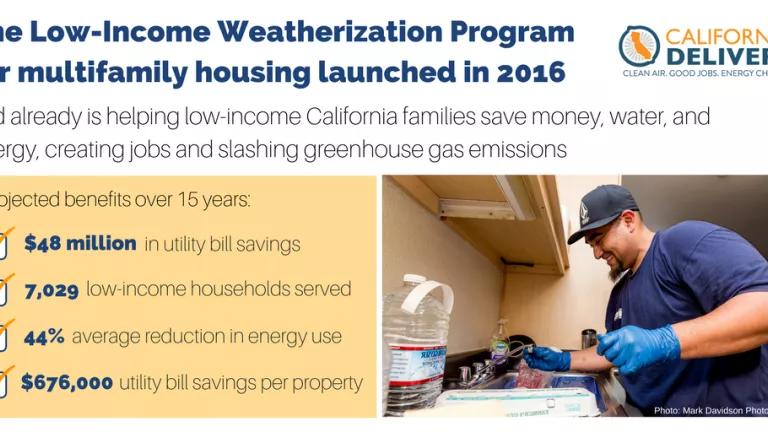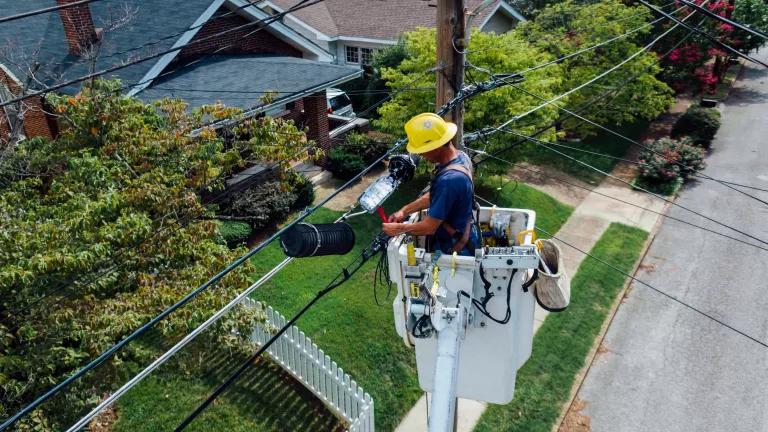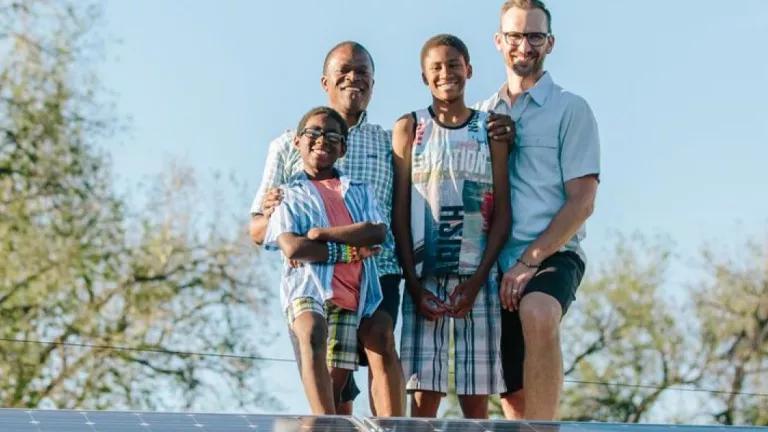California Takes 5 Steps Toward Energy Equity

Approximately one in five California households lives at or below the federal poverty level—$32,000 for a family of two—but new energy efficiency and clean energy programs, regulatory protections, and initiatives are poised to provide safer, healthier, and more affordable homes for hundreds of thousands of residents.
Low-income renters and affordable housing owners face disproportionately high energy burdens—the percentage of income going to utility bills—and improving access to clean energy means lower bills, more housing security, and a cleaner, healthier environment for more Californians.
As a part of Energy Efficiency for All (EEFA), a collaborative effort between affordable housing, energy efficiency, clean energy, and environmental justice advocates, we are celebrating five milestones from the end of 2017. EEFA in California includes the Greenlining Institute, Natural Resources Defense Council, California Environmental Justice Alliance, Association for Energy Affordability, Build It Green, California Housing Partnership Corporation, and National Housing Law Project, among other partners.
With these accomplishments—including new and expanded clean energy funding adding up to over $1 billion in total and over $118 million in 2018 alone—we’re energized to keep working in 2018 to expand clean energy access for California’s low-income renters and affordable housing owners who are waiting to join the clean energy economy.
5 Steps Forward in 2017
New Funding for Low-income Weatherization Program (LIWP)
LIWP is one of the best models for delivering whole building energy efficiency retrofits in the state and is highly sought after by affordable housing owners. However, LIWP was at risk of being zeroed-out due to competing funding demands. Our EEFA coalition helped ensure its continued survival.
In September, the California legislature allocated $18 million to the California Community Services and Development Department based largely on EEFA advocacy and outreach. The funding will support the continued operation of the LIWP program plus new investments in community solar projects and farmworker housing.
While exciting, this allocation is insufficient to cover even the owners currently on the waitlist for the program. We look forward to more meaningful allocations in the coming year that can support the robust demand for the program.
New Solar Roofs Program for Affordable Housing Renters
The new Solar on Multifamily Affordable Housing (SOMAH) Program was formally approved by the California Public Utilities Commission (CPUC) in December after continuous EEFA engagement from start to finish.
This landmark solar program for affordable housing is expected to facilitate construction of over 300 megawatts (MW) of new solar capacity on over 2,000 affordable housing properties using $1 billion over 10 years. Each household in these properties will receive a utility bill credit for the amount of clean energy generated by the system on their building that reduces their utility bill.
We look forward to working with CPUC staff and the program administrator to ensure energy efficiency opportunities are provided to these properties to maximize the benefits to residents. Doing so would further reduce residents’ bills and increase the health, comfort, and safety of their homes.
Expanded Energy Savings Assistance Program (ESAP) for Efficiency Upgrades in Affordable Housing
The expansion of ESAP to fund weatherization and upgrades in affordable, multifamily housing is another win for EEFA. We believe this new, $80 million, multifamily program will help ensure the long-term affordability of housing for low-income renters in California.
2017 saw the creation of the first-ever public multifamily working group for ESAP, designed to inform program design, and improve the program’s record of underperformance. We advocated for a clearer timeline to launch the program and a more inclusive and public process. In December, the Public Utilities Commission did just that, establishing a meaningful public process to inform program design during the first quarter of 2018.
All can join this public working group, which will be very busy for the first quarter of 2018 as the program is prepared for launch in the later part of the year.
New Data Transparency for Affordable Housing Owners
The same decision that authorized improvements to ESAP also laid the groundwork for increased utility data-sharing, something our coalition believes is essential to eliminating inefficiencies in California’s energy efficiency programs for low-income Californians.
This came on the heels of the California Energy Commission approving the finalized details of Assembly Bill 802 after years of EEFA engagement. Affordable housing owners can now request monthly whole-building energy usage data for buildings with five or more residential units. This information is key to understanding a building’s energy use and its potential savings.
Unfortunately, the decision does not cover duplexes or fourplexes (commonly referred to as “garden style” apartments and popular in California’s central valley) due to a semantics issue. This year we will be exploring opportunities to ensure all properties are included.
New Low-income & Disadvantaged Community Advisory Forums
California continues to increase opportunities for the voices of all Californians to be heard, including those living below the poverty line and in disadvantaged communities. In December, the CPUC announced the establishment of the Disadvantaged Communities Advisory Group as a continuation of its commitment to Senate Bill 350, which emphasizes the need to create access to clean energy for all Californians.
In Los Angeles County, where over a quarter of households live in poverty due to high housing costs, the Department of Water and Power (LADWP) created a new low-income and multifamily equity director position in response to EEFA’s advocacy. LADWP has since launched a Low-Income Customer Access Advisory Group to effectively address the needs of its low-income customers.
This year our coalition plans to release a study on the technical potential for energy efficiency savings in low-income and disadvantaged communities in Los Angeles to spotlight the need for more investment and allocation to programs that benefit these communities.
These five steps to ensure that all Californians—not just single-family homeowners—can benefit from clean energy are a bright spot among efforts by many other cities and states to fight back against the federal government’s attempts to stop progress.
We believe equitable access to clean energy is vital to healthy and vibrant communities across California. In 2018, we can’t wait to continue to grow opportunities for state regulators to lead in this area and reduce barriers to access for the millions of Californians who are waiting to take part in our clean energy future.



